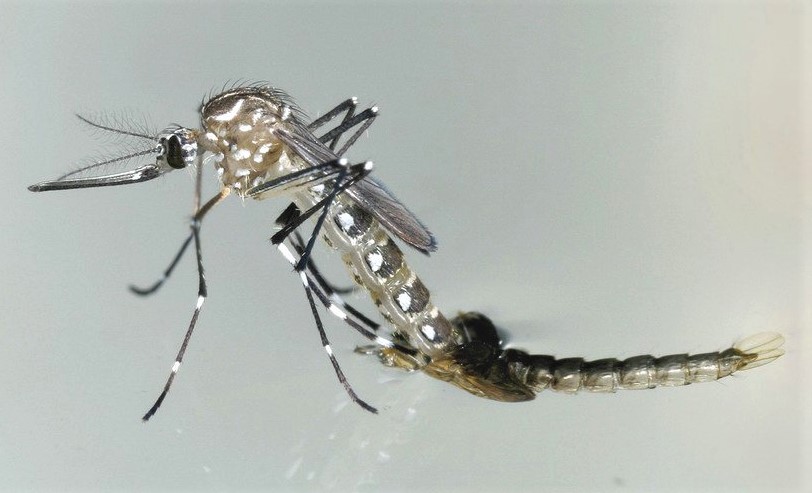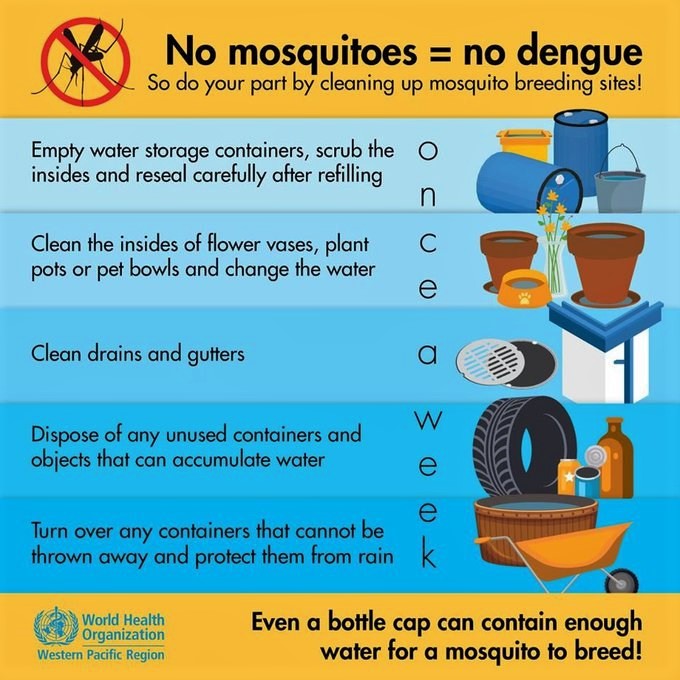By Henrylito D. Tacio
Here comes the rain. So, expect the usual aftermaths: floods and dengue. In fact, the Department of Health (DOH) is urging all people to watch out for the resurgence of dengue cases.
“Mosquito-borne diseases usually break out during the rainy season, particularly after a flood or heavy rain,” the health department said. “This is because pools and puddles of water formed after the rain are ideal breeding places for the day-biting female mosquito that carries the disease.”
Generally, those who die from dengue are children and adults, whose immune systems are already compromised.
Two summers ago, Mario went to Buda for a much-needed vacation. Unknowingly, he contracted dengue while roaming under the beautiful pine trees. That night, he experienced fever and severe headache.
His friends noticed that it was not just an ordinary headache and fever, so they brought him to Davao City. But it was already too late; Mario suffered hemorrhage in the liver and succumbed three weeks after being confined at the hospital. The doctor said he died of dengue.
The symptoms of dengue fever are now familiar to most people situated in areas where the disease is most common. Those who are afflicted by dengue fever experience a flu-like illness. It is followed by high fever, severe headache, pain behind the eyes, muscle and joint pains, and rashes.
Lethal complication
A more lethal complication, called dengue hemorrhagic fever (DHF), may ensue. First recognized during the 1950s, it is today a leading cause of childhood deaths in many countries.
“Dengue hemorrhagic fever is a potentially deadly complication that is characterized by high fever, hemorrhagic phenomena – often with enlargement of the liver – and in severe cases, circulatory failure,” explains the Geneva-based World Health Organization (WHO).
Generally, dengue fever starts with a sudden rise in temperature and accompanied by facial flush and other nonspecific constitutional symptoms of dengue fever. The fever usually continues for two to seven days and can be as high as 40-41 degrees Centigrade, possibly with febrile convulsions and hemorrhagic phenomena.
In moderate dengue fever cases, all signs and symptoms abate after the fever subsides. In severe cases, however, the patient’s condition may suddenly deteriorate after a few days of fever; the temperature drops, followed by signs of circulatory failure, and the patient may rapidly go into a critical state of shock and die within 12-24 hours, or quickly recover following appropriate volume replacement therapy.
Dengue-carrying mosquito
Dengue viruses are transmitted to humans through the bite of infected Aedes aegypti mosquito. Also known as tiger mosquito, because of its peculiar white stripes, this species is quite small, measuring only five millimeters. It is attracted to the odor and sweat of human beings and bites only during daytime. However, its peak biting time is after sunrise and at dusk – especially one hour before sunset.
As adults, the mosquitoes prefer warm weather. Mosquitoes, in general, are active in areas with temperatures ranging from 25 to 40 degrees Celsius and with moderate to high humidity. They cease to function at temperatures below 14 degrees Celsius.
Temperature, clearly, is important: for the mosquito as well as the virus it carries. In Aedes, slight changes in temperature can mean a lot in terms of transmission potentials. “At high temperatures, it takes the virus faster to develop in a mosquito,” explained a government health official. “This means there is a faster potential for dengue transmission.”
Like all other mosquitoes, only the female bites. The adult female Aedes mates and takes its first blood meal about 48 hours after coming of its pupa stage. It can bite several people, depending on how much blood it sucks.
To lay eggs, it has to be engorged with blood, which may take two to five days. Each Aedes female can lay up to four batches of eggs – at least 40 eggs per batch – during its life cycles. The eggs hatch into “wrigglers” in two days, and after four days become “tumblers.”
Scientists have discovered that the eggs of Aedes mosquito can survive up to six months – even when their breeding grounds go dry under natural conditions. Some of the remaining eggs can still go on when the breeding sites become filled with water again.
Breeding sites
The breeding sites are never far from human habitation. They live in such “places” as tree holes, bamboo stumps, earthen jars for water storage, discarded bottles and tins, old rubber tires, rain barrels for collecting rainwater, clogged roof gutters, coconut shells and husks, and canoes and small fishing boats.
Inside the house or office buildings, the potential sites for the mosquito larvae are “any container than can accumulate water for up to seven days,” according to the DOH. These include uncovered water storage tanks, flower vases, saucers for ornamental plants, soft drink bottles, and metal and plastic pails for water storage.
Dr. Michael MacDonald, an American entomologist from Johns Hopkins University in Baltimore, said that only the tiger mosquitoes, which have bitten a person infected with dengue fever, are carriers of the dengue virus. And it is not directly transmitted from one person to person.
“Once infected, a mosquito remains infective for life, transmitting the virus to susceptible individuals during probing and blood feeding,” Dr. MacDonald points out.
Health experts say that when a person is bitten and the dengue virus is deposited in the bloodstream, it usually takes an incubation period of four to six days before symptoms appear.
In some adults, dengue is not generally fatal. After contracting the virus from infected mosquitoes, some people develop a silent infection, exhibiting few – if any – symptoms. Their immune systems are able to fight off the disease. Others develop symptoms that are like the flu’s: fever and fatigue that disappear in two weeks.
Timely tips
Until now, there is still no specific treatment for dengue fever. All that the physician can do is to give supportive treatment such as antifever pills (like paracetamol) and plenty of fluids (orally and intravenously). There is already a vaccine available against dengue but due to past experiences of it, many parents are wary of using it.
One of the best ways to prevent dengue is to avoid being bitten by the dengue-carrying mosquitoes. And there are several ways of doing so; here are some of them:
• Natural control: Done by preserving the natural predators of mosquitoes such as dragon flies, lizards, spiders, frogs, aquatic beetles, and water bugs.
• Cultural control: Includes sanitation and hygiene, getting rid of tin cans, and other materials that serve as breeding grounds; clearing clogged canals; pruning or trimming plants to avoid dense canopy that serve as hiding places of mosquitoes; and smudging.
• Biological control: Raising larvivorious fishes such as tilapia in ornamental pools and ponds.
• Mechanical control: Using mesh screens to prevent day-biting insects from entering the house. Also, treating mosquito nets with pyrethroid to prevent mosquito bites.
• Botanical control: Crude extracts from neem leaves applied to stagnant canals.
• Chemical control: The last thing to in annihilating the mosquitoes. Fogging or spraying may be done in schools and areas where there is an epidemic.
There are those who recommend fogging and using chemicals to fight dengue. “Fogging and using chemicals will only give people an illusory sense of security,” explains Dr. Enrique Tayag, one of the country’s dengue experts.
After all, the insecticide used in fogging only kills the adult mosquito while leaving millions of larvae untouched. In addition, mosquitoes not killed may develop resistance to the insecticide, which may be harder to eliminate later on.
The community should work together in curbing dengue epidemic. “The community should be educated on factors causing dengue because its cooperation is vital to its control,” commented Dr. Nerissa Dominguez, DOH national coordinator of the communicable disease control service. – ###
Photos courtesy of WHO


